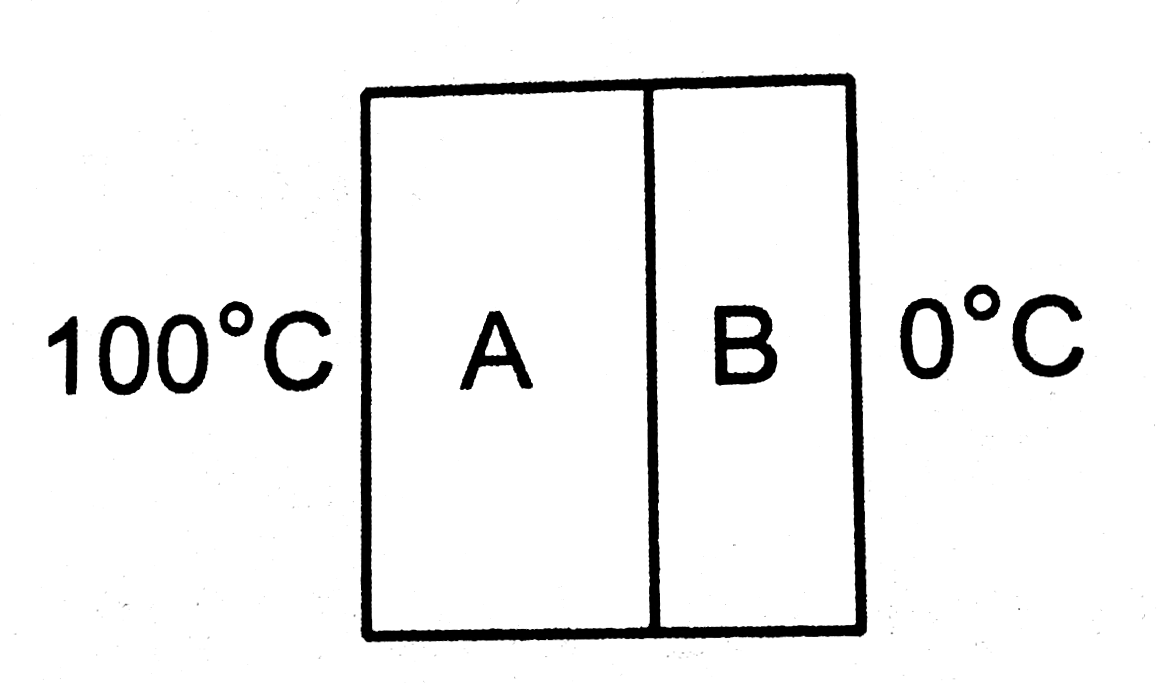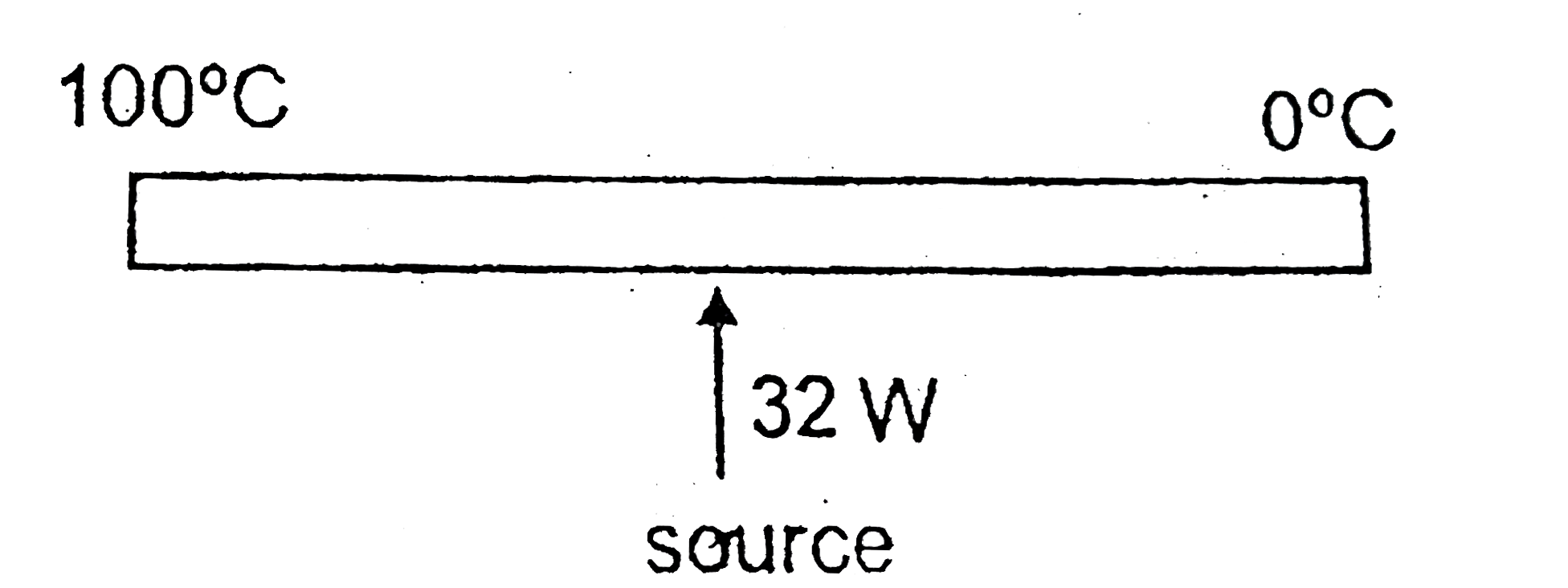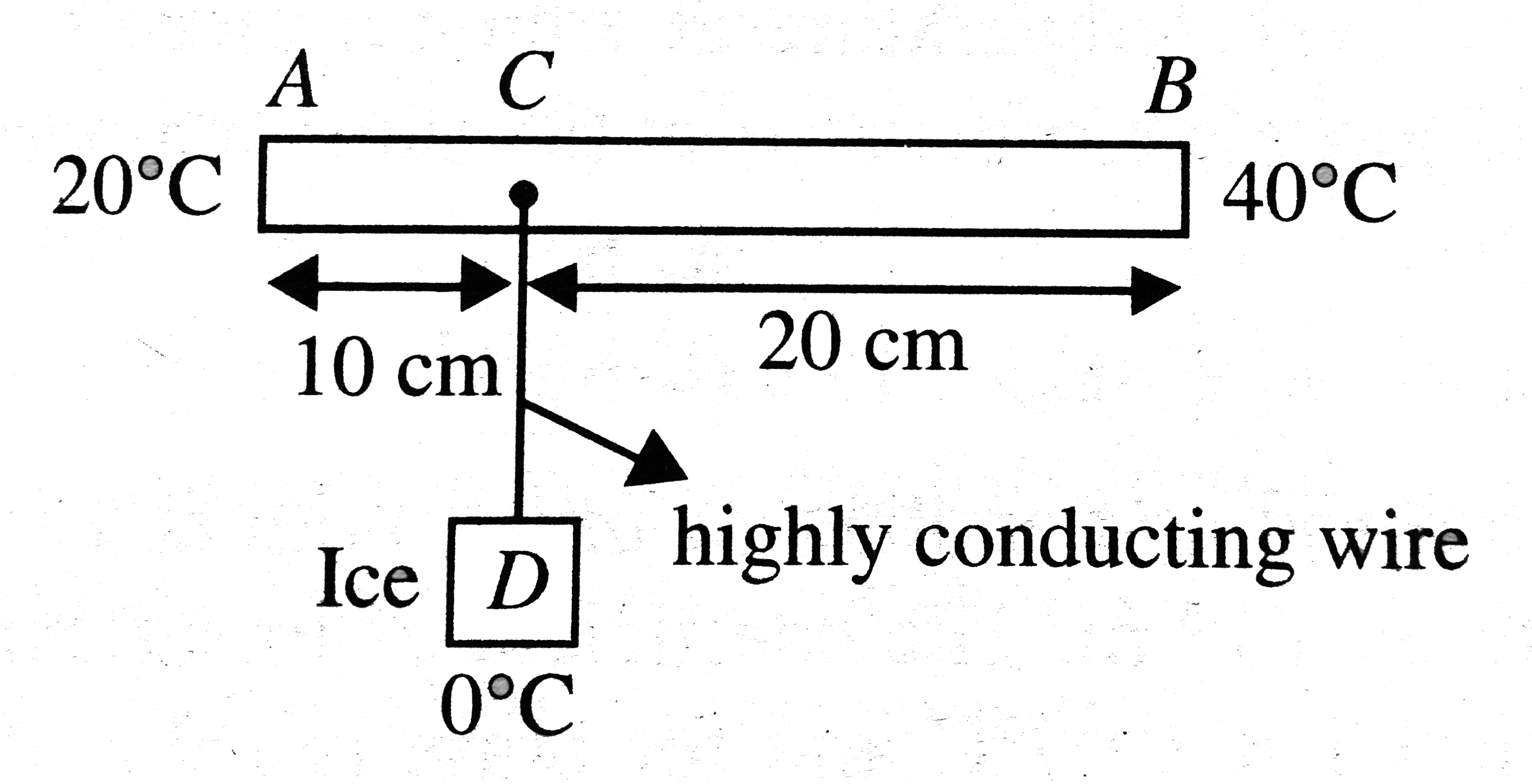A rod of negligible heat capacity has length 20cm, area of cross section 1.0cm2 and thermal conductivity 200Wm−1C−1 . The temperature of one end is maintained at 0∘C and that of the other end is slowly and linearly varied from 0∘C to 60∘C in 10 minutes. Assuming no loss of heat through the sides, find the total heat transmitted through the rod in these 10 minutes.
The correct Answer is:A
To solve the problem step by step, we will use the formula for heat transfer through conduction and the properties of arithmetic progression.
Step 1: Identify Given Data
We have the following data:
- Length of the rod, L=20cm=0.2m
- Area of cross-section, A=1cm2=1×10−4m2
- Thermal conductivity, k=200W/m°C
- Temperature at one end, θ1=0°C
- Temperature at the other end varies from θ2=0°C to 60°C over t=10minutes=600seconds
Step 2: Calculate the Temperature Gradient
The temperature gradient dθdt can be calculated as:
dθdt=ΔθΔt=60°C−0°C600s=0.1°C/s
Step 3: Write the Heat Transfer Equation
The heat transfer dqdt through the rod can be expressed using Fourier's law of heat conduction:
dqdt=kA(θ2−θ1)L
Since θ1=0°C and θ2 changes from 0°C to 60°C, we can express dq as:
dq=kAL⋅(θ2)⋅dt
Step 4: Calculate Total Heat Transmitted
To find the total heat transmitted over the 10 minutes, we need to integrate the heat transfer over time. Since θ2 varies linearly, we can sum the contributions from 0°C to 60°C.
The total heat Q can be calculated as:
Q=∫6000kAL⋅(0.1t)dt
This integral represents the sum of heat transferred at each second from 0 to 600 seconds.
Step 5: Solve the Integral
Calculating the integral:
Q=kAL⋅0.1∫6000tdt
The integral ∫6000tdt=t22∣∣∣6000=60022=180000.
Now substituting back:
Q=200×1×10−40.2⋅0.1⋅180000
Q=200×10−40.2⋅0.1⋅180000=1000⋅0.1⋅180000=1800J
Final Answer
The total heat transmitted through the rod in 10 minutes is 1800J.
We have the following data:
- Length of the rod, L=20cm=0.2m
- Area of cross-section, A=1cm2=1×10−4m2
- Thermal conductivity, k=200W/m°C
- Temperature at one end, θ1=0°C
- Temperature at the other end varies from θ2=0°C to 60°C over t=10minutes=600seconds
The temperature gradient dθdt can be calculated as:
dθdt=ΔθΔt=60°C−0°C600s=0.1°C/s
The heat transfer dqdt through the rod can be expressed using Fourier's law of heat conduction:
dqdt=kA(θ2−θ1)L
Since θ1=0°C and θ2 changes from 0°C to 60°C, we can express dq as:
dq=kAL⋅(θ2)⋅dt
To find the total heat transmitted over the 10 minutes, we need to integrate the heat transfer over time. Since θ2 varies linearly, we can sum the contributions from 0°C to 60°C.
Q=∫6000kAL⋅(0.1t)dt
This integral represents the sum of heat transferred at each second from 0 to 600 seconds.
Calculating the integral:
Q=kAL⋅0.1∫6000tdt
The integral ∫6000tdt=t22∣∣∣6000=60022=180000.
Q=200×1×10−40.2⋅0.1⋅180000
Q=200×10−40.2⋅0.1⋅180000=1000⋅0.1⋅180000=1800J
The total heat transmitted through the rod in 10 minutes is 1800J.
Topper's Solved these Questions
- BOOK - HC VERMA ENGLISHCHAPTER - HEAT TRANSFEREXERCISE - QUESTIONS FOR SHORT ANSWER11videos
HEAT TRANSFER
- BOOK - HC VERMA ENGLISHCHAPTER - HEAT TRANSFEREXERCISE - OBJECTIVE II6videos
HEAT TRANSFER
- BOOK - HC VERMA ENGLISHCHAPTER - HEAT AND TEMPERATUREEXERCISE - Objective 26videos
HEAT AND TEMPERATURE
- BOOK - HC VERMA ENGLISHCHAPTER - INTRODUCTION TO PHYSICSEXERCISE - Question for short Answer4videos
INTRODUCTION TO PHYSICS
Similar Questions
A rod of negligible heat capacity has a length of 50 cm, area of cross section 5cm2 and thermal conductivity 500 W/m∘C. The temperature of one end is maintained at 0∘C and that fo the other end is slowly and linearly varied from 0∘C to 60∘C in 20 min. Assuming no heat loss through the lateral side, the total heat transmitted throught he rod in 20 minutes is
View SolutionA rod AB is 1m long. The temperature of its one end A is maintained at 100∘C and other end B at 10∘C, the temperature at a distance of 60 cm from point B is
View SolutionOne end of conducting rod is maintained at temperature 50∘C and at the other end ice is melting at 0∘C. The rate of melting of ice is doubled if:
View SolutionTwo parallel plates A and B are joined together to form a compound plate . The thicknesses of the plate are 4.0cm and 2.5cm respectively and the area of cross section is 100cm2 for each plate. The thermal conductivities are KA=200Wm−1C−1 for plate A and KB=400Wm−1C−1 for the plate B. The outer surface of the plate A is maintained at100∘C and the outer surface of the plate B is maintained at 0∘C. Find (a) the rate of heat flow through any cross section, (b) the temperature at the interface and (c) the equivalent thermal conductivity of the compound plate.
 View Solution
View SolutionThe ends of copper rod of length 1m and area of cross section 1cm2 are maintained at 0∘C and 100∘C. At the centre of rod, there is a source of heat of 32W. The thermal conductivity of copper is 400W/mK
 View Solution
View SolutionA heat flux of 4000 J/s is to be passed through a copper rod of length 10 cm and area of cross section 100cm2. The thermal conductivity of copper is 400W/m/∘C The two ends of this rod must be kept at a temperature difference of
View SolutionA heat flux of 4000 J/s is to be passed through a copper rod of length 10 cm and area of cross section 100cm2. The thermal conductivity of copper is 400W/m/∘C The two ends of this rod must be kept at a temperature difference of
View SolutionThe left end of a copper rod (length=20cm, Area of cross section=0.2cm2) is maintained at 20∘C and the right end is maintained at 80∘C . Neglecting any loss of heat through radiation, find (a) the temperature at a point 11cm from the left end and (b) the heat current through the rod. thermal conductivity of copper =385Wm−1C−1 .
View Solution
As shown in Fig. AB is rod of length 30 cm and area of cross section 1.0cm2 and thermal conductivity 336 SI units. The ends A and B are maintained at temperatures 20∘C and 40∘C, respectively .A point C of this rod is connected to a box D, containing ice at 0∘C through a highly conducting wire of negligible heat capacity. The rate at which ice melts in the box is (assume latent heat of fusion for ice Lf=80cal/g)View Solution
As shown in Fig. AB is rod of length 30 cm and area of cross section 1.0cm2 and thermal conductivity 336 SI units. The ends A and B are maintained at temperatures 20∘C and 40∘C, respectively .A point C of this rod is connected to a box D, containing ice at 0∘C through a highly conducting wire of negligible heat capacity. The rate at which ice melts in the box is (assume latent heat of fusion for ice Lf=80cal/g)View Solution

